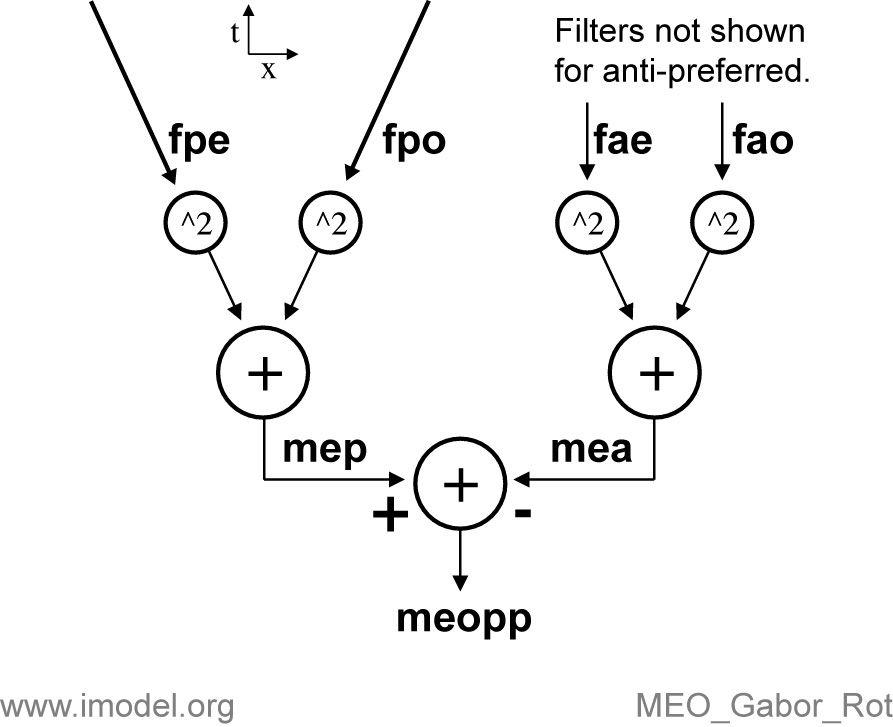DS_Gabor_One
MEO_Gabor
ME_Gabor
MEO_Gabor_Rot
ME_Gabor_Rot
RD_Exp_T
RD_2Gabor
RD_2Gabor_Rect
Variations
MEO_Gabor_Rot
... .010
... .s1tH
... .s1tH.tSD2
... .s1t2
... .sHt1
... .s2t1
Opponent Motion Energy, Rotated Gabor Filter
This modification of the MEO_Gabor model has Gabor filters with Gaussian envelopes that are rotated in space-time to align with the orientation of the tilted sinusoidal grating, as depicted by McLean and Palmer (1994; their Fig 1A). The rotation in X-T results in a rotation in sensitivity in spatial and temporal frequency space that causes the SF-TF tuning to be inseparable. Inseparable tuning has been observed in some direction selective V1 neurons in macaque (Priebe et al. 2006), but rarely in cat (McLean and Palmer, 1994).
Results
References
- McLean J, Palmer LA (1994) Organization of simple cell
responses in the three-dimensional (3-D) frequency domain. Vis
Neurosci 11:295-306.
- Priebe NJ, Lisberger SG Movshon JA (2006) Tuning for spatiotemporal frequency and speed in directionally selective neurons of macaque striate cortex. J Neurosci 26:2941-2950.

The opponent signal (meopp) is then offset, scaled and half-wave rectified, and it is used to drive a Poisson spiking mechanism. The spikes are time shifted to simulate a neurobiological latency. See the model (.moo) files for the parameters that govern these computations.